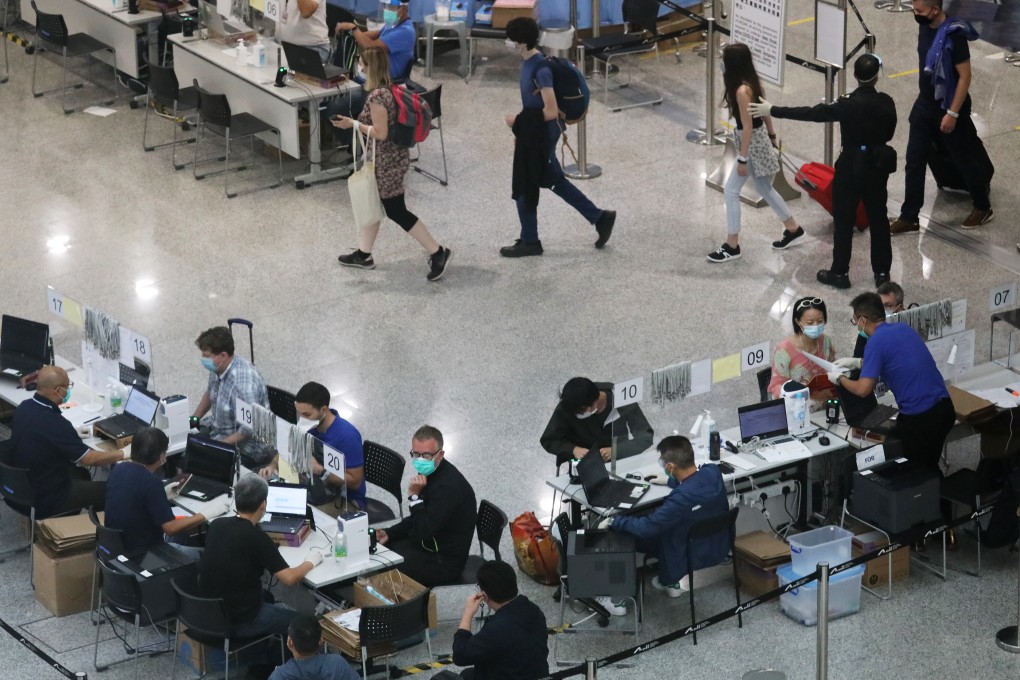Letters | Coronavirus: Hong Kong airport testing protocol needs fixing
- The arrivals and sorting process at the airport could be streamlined and more should be done to safeguard the data privacy of those in quarantine

I got back from the United Kingdom on October 18. After stepping out of the plane, there were various checkpoints where we were asked to show our health declaration QR code, the Stay Home Safe app installed on our phone, our Hong Kong identity card or passport. We were given different kinds of papers at each of these checkpoints.
So I had to hold all these papers, my mobile phone, my hand luggage and my Hong Kong identity card. Instead, all these steps could be consolidated at one checkpoint where the same staff could run through the document checks and app installation, reducing the movement of passengers.
However, right after disembarking, we were mingling with people from other flights. People with orange, red and green lanyards were moving around together, taking the same rail link to baggage claim and in the same queue for everything from sample collection to buses for the same quarantine hotel. So what’s the point of triaging people and designating high-risk origins?
Once activated, the Stay Home Safe app would send out several notifications a day asking me to scan the QR code on my wristband. The first few days, there would be a “thank you” message when the scan was done. Then, probably on the fourth day, there was no “thank you” message after each scan.